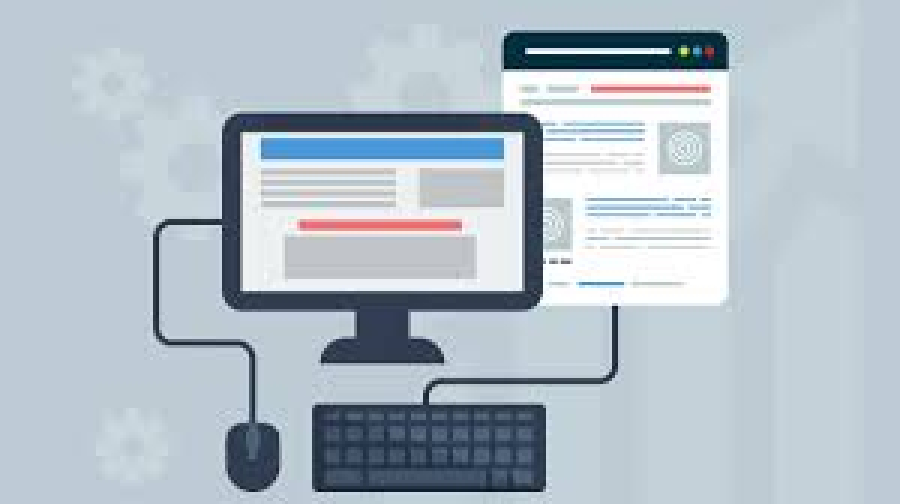The Rise of No-Code & Low-Code Web Development
In today’s fast-paced digital era, businesses and individuals alike demand quicker, more flexible solutions for building websites and applications. Enter no-code and low-code web development—powerful trends that are revolutionizing how websites are created. These tools empower non-technical users to develop full-scale web applications and allow developers to work more efficiently. On freelancerbridge, a platform focused on empowering freelancers and developers, understanding the impact of no-code and low-code platforms is essential for staying ahead in the evolving landscape of web development.
🔍 What is No-Code & Low-Code Development?
No-Code Development: Platforms that enable users to build websites or applications without writing a single line of code. It’s primarily visual, using drag-and-drop interfaces.
Low-Code Development: Designed for developers and technically-inclined users, low-code platforms allow some level of coding to customize applications but greatly reduce the manual effort and complexity.
These platforms are disrupting traditional workflows by reducing the technical barrier to entry and accelerating project timelines.
🌍 Why No-Code and Low-Code Matter in Web Development
With growing demand for rapid deployment and scalable solutions, businesses are turning to these tools for:
Faster time to market
Lower development costs
Greater collaboration between technical and non-technical teams
Empowering startups and freelancers to launch MVPs quickly
For freelancers, no-code/low-code opens new avenues—whether it’s building prototypes, launching client websites, or creating internal tools.
✅ Key Benefits of No-Code & Low-Code Development
1️⃣ Speed and Efficiency
No-code and low-code platforms drastically reduce development time.
Build and deploy websites in days instead of weeks.
Use pre-built templates, components, and modules.
Automatic integrations with third-party tools.
SEO Point: Faster launch = quicker indexing and faster SEO performance from day one.
2️⃣ Cost-Effectiveness
Lower development time means lower project costs, making it perfect for:
Startups with limited budgets
Freelancers offering affordable packages
Agencies managing multiple clients
SEO Point: More budget can be allocated to SEO tools, content, and marketing.
3️⃣ Ease of Use for Non-Developers
Entrepreneurs, marketers, and business owners can build basic websites or dashboards without a developer.
No dependency on hiring full-time developers.
Real-time edits without back-end access.
SEO Point: Content creators can update SEO elements (meta titles, descriptions, etc.) directly without technical help.
4️⃣ Rapid Prototyping and MVPs
No-code platforms allow you to test ideas faster and validate product-market fit.
Create MVPs (Minimum Viable Products) in days.
Gather user feedback before full-scale development.
SEO Point: Test SEO strategies early with rapid deployment of niche landing pages or product pages.
5️⃣ Empowering Freelancers and Agencies
Freelancers can now:
Offer web development services even without coding knowledge.
Serve more clients with less effort.
Upsell services like SEO optimization, design, or integrations.
SEO Point: Add value by combining no-code web development with SEO-rich content strategies.
6️⃣ Scalability and Flexibility
Low-code platforms are ideal for scaling projects.
Start with minimal features.
Add complexity (custom code) as your project grows.
Integrate APIs and cloud-based systems.
SEO Point: Build scalable, SEO-optimized web platforms that grow with your audience.
✅ Popular No-Code & Low-Code Platforms
Here are some tools you might encounter:
No-Code: Webflow, Wix, Bubble, Carrd, Glide
Low-Code: OutSystems, Appgyver, Mendix, Zoho Creator
Each of these platforms supports SEO features like meta tags, URL customization, sitemaps, and responsive design.
✅ Challenges of No-Code and Low-Code
Despite their advantages, these platforms come with limitations:
Customization limits: May not suit highly complex websites.
Platform dependency: Vendor lock-in can be an issue.
Performance: Some no-code tools produce bloated code that affects site speed.
Learning curve: While easier than coding, mastering platforms like Webflow still takes time.
SEO Point: Poor site performance and lack of SEO structure can hurt rankings. Choosing the right platform is key.
✅ Best SEO Practices for No-Code/Low-Code Websites
To ensure your site performs well in search engines:
Optimize Load Speed: Compress images, use lazy loading, and avoid unnecessary animations.
Mobile Responsiveness: Ensure your no-code platform outputs responsive design.
Meta Tags and Titles: Customize title tags, meta descriptions, and alt tags for images.
Sitemap & Robots.txt: Enable automated generation of sitemaps and set crawl permissions.
URL Structure: Use clean, keyword-rich URLs instead of auto-generated slugs.
Platforms like Webflow and Bubble allow full control over SEO settings—use them wisely.
✅ Future of No-Code & Low-Code in Web Development
The rise of AI, machine learning, and automation will further enhance no-code capabilities:
AI-driven page generation
Smart SEO suggestions
Integrated marketing tools
Personalized user experiences with minimal setup
As clients and businesses push for agility, freelancers who master these tools will lead the next wave of web innovation.
✅ Final Thoughts
The no-code and low-code revolution is here to stay. Whether you're a seasoned developer or just starting out on freelancerbridge, embracing these platforms can multiply your productivity, expand your service offerings, and help you stay relevant in an evolving digital world.
From rapid MVPs to SEO-friendly websites, no-code/low-code tools give you the freedom to build smarter—not harder. As a freelancer or agency, adding these solutions to your toolkit can lead to faster results, satisfied clients, and a stronger online presence.


 by Emily
by Emily




